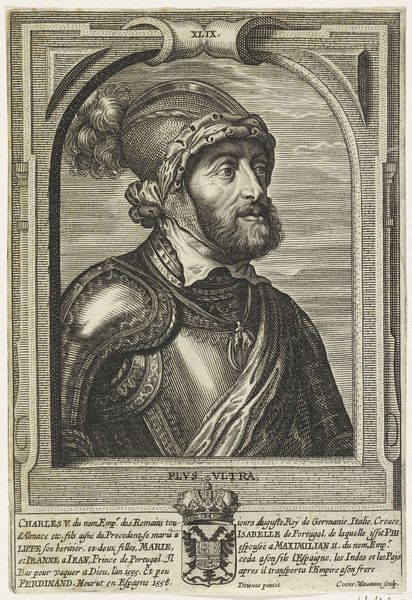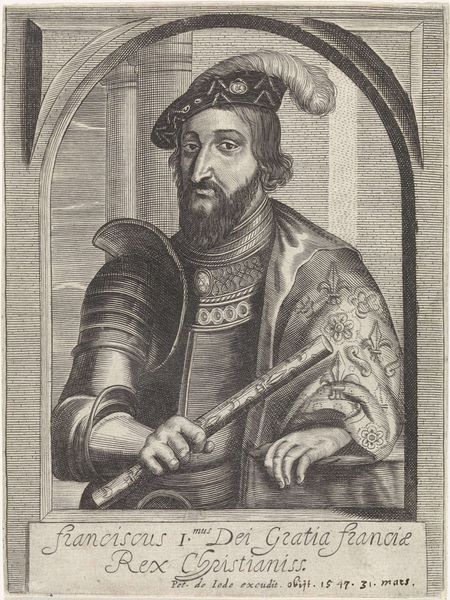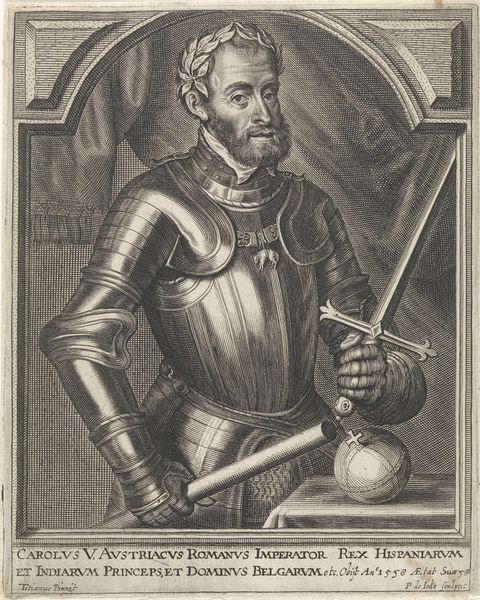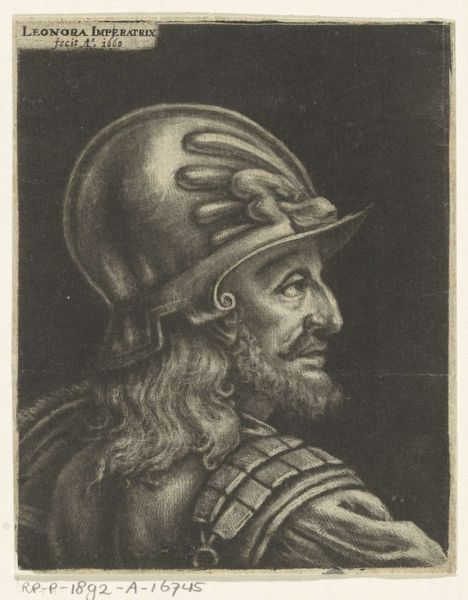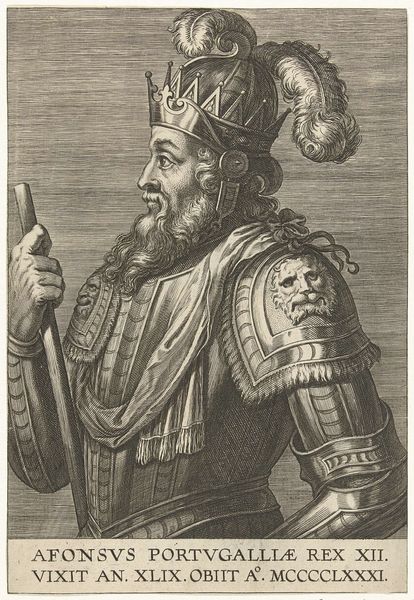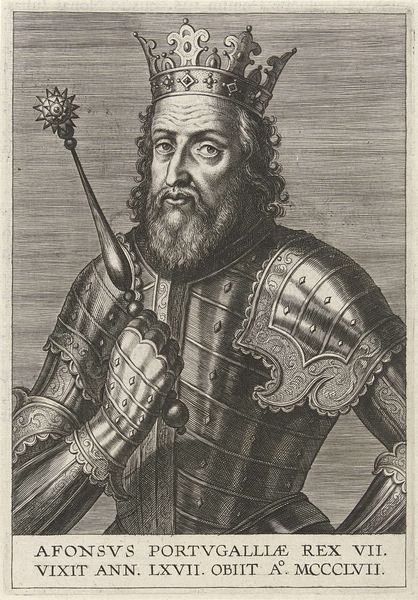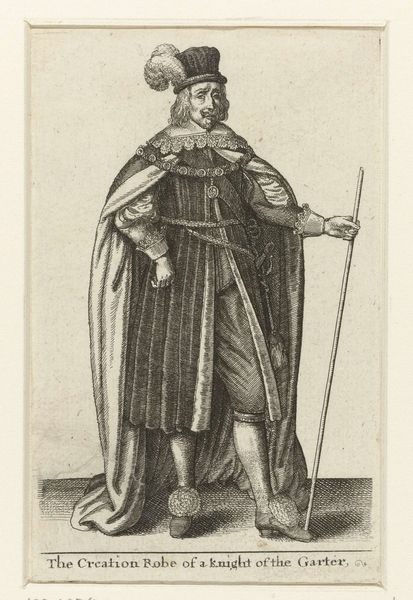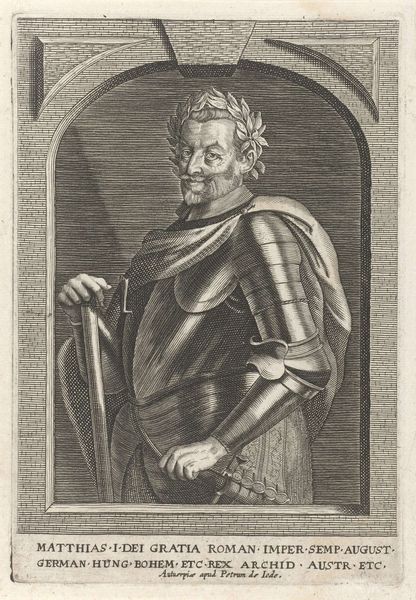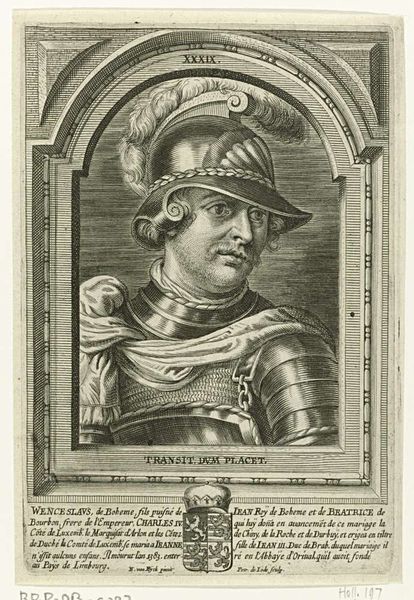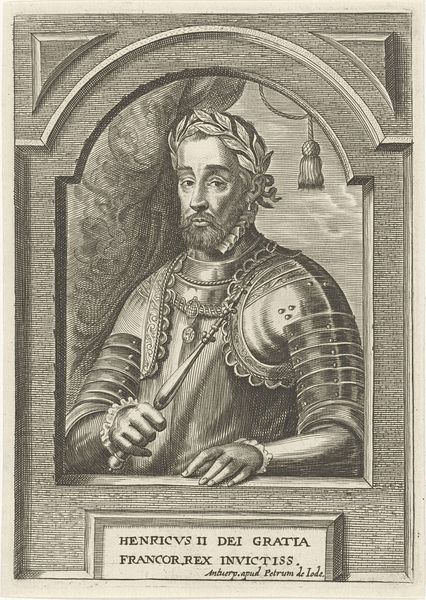
engraving
#
portrait
#
old engraving style
#
caricature
#
portrait reference
#
portrait drawing
#
history-painting
#
engraving
Dimensions: height 175 mm, width 119 mm
Copyright: Rijks Museum: Open Domain
This print, depicting Lambert I of Leuven, was made by Pieter de Jode the Younger in the 17th century. It's an engraving, meaning the image was incised into a metal plate, likely copper, with a tool called a burin. Ink was then applied to the plate and wiped off the surface, remaining only in the incised lines. Finally, the image was transferred to paper under high pressure. Consider the labor involved: the skilled hand meticulously carving the dense network of lines that create tone and form. Notice the material qualities achieved through this process - the crispness of the lines, the subtle gradations of light and shadow. De Jode expertly uses these qualities to convey the textures of Lambert's armor and the feathery plume of his helmet. Engraving was a key technology for disseminating images and information, acting as a precursor to photography. In a sense, prints like these democratized art, making it accessible to a wider audience than unique paintings or sculptures. They also reflect the rise of a market economy in art, where prints could be produced and sold in multiples, responding to public demand.
Comments
No comments
Be the first to comment and join the conversation on the ultimate creative platform.
